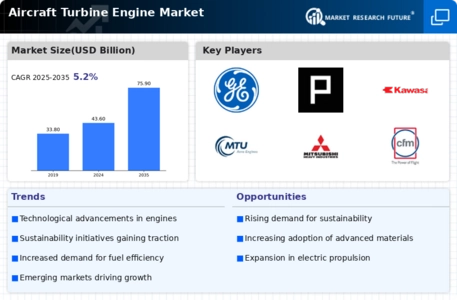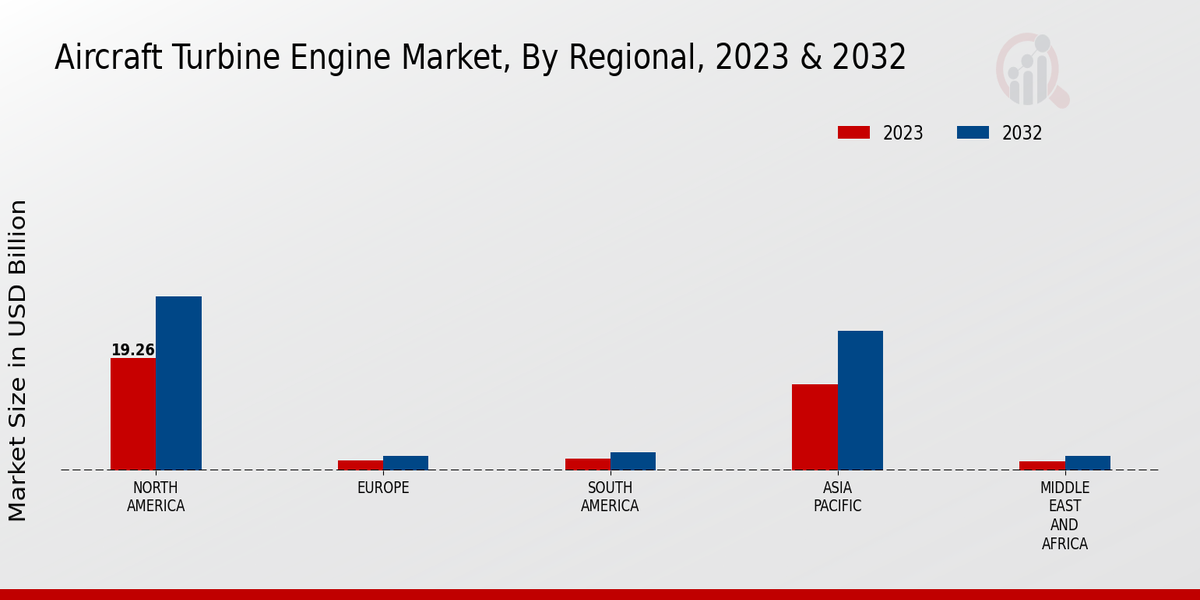Rising Military Expenditure
The Global Aircraft Turbine Engine Market Industry is also bolstered by rising military expenditure across various nations. Governments are investing heavily in modernizing their military fleets, which includes the procurement of advanced turbine engines for fighter jets and transport aircraft. For instance, the U.S. Department of Defense has allocated substantial budgets for the development of next-generation military aircraft, directly impacting the demand for high-performance turbine engines. This trend is expected to contribute significantly to market growth, as defense contracts often involve long-term commitments and substantial financial investments.
Expansion of Commercial Aviation
The Global Aircraft Turbine Engine Market Industry is significantly influenced by the expansion of commercial aviation. As emerging economies continue to develop, the demand for air travel is surging. For example, the International Air Transport Association forecasts that global passenger numbers could reach 8.2 billion by 2037. This growth necessitates a corresponding increase in aircraft production, thereby driving the demand for turbine engines. Consequently, the market is anticipated to reach 75.9 USD Billion by 2035, underscoring the critical relationship between commercial aviation growth and turbine engine demand.
Increasing Demand for Fuel Efficiency
The Global Aircraft Turbine Engine Market Industry is witnessing a pronounced shift towards fuel-efficient technologies. Airlines are increasingly prioritizing engines that offer lower fuel consumption, which directly correlates with operational costs. For instance, modern turbofan engines are designed to achieve a 15-20 percent improvement in fuel efficiency compared to older models. This trend is driven by the need to comply with stringent environmental regulations and to reduce carbon emissions. As a result, the market is projected to reach 43.6 USD Billion in 2024, reflecting the industry's commitment to sustainable aviation practices.
Government Initiatives and Regulations
Government policies and regulations are shaping the landscape of the Global Aircraft Turbine Engine Market Industry. Many countries are implementing stricter emissions standards and promoting the use of sustainable aviation fuels. For instance, the European Union has set ambitious targets for reducing greenhouse gas emissions from aviation. These regulatory frameworks encourage manufacturers to innovate and develop cleaner, more efficient engines. As a result, the market is likely to see increased investment in research and development, further propelling growth and enhancing the competitive landscape.
Technological Advancements in Engine Design
Technological innovations play a pivotal role in shaping the Global Aircraft Turbine Engine Market Industry. The introduction of advanced materials, such as ceramic matrix composites, enhances engine performance and durability. Furthermore, the development of digital twin technology allows for real-time monitoring and predictive maintenance, thereby reducing downtime. These advancements not only improve the efficiency of existing engines but also pave the way for next-generation designs. As a result, the market is expected to grow at a CAGR of 5.17% from 2025 to 2035, indicating a robust trajectory driven by continuous innovation.



















